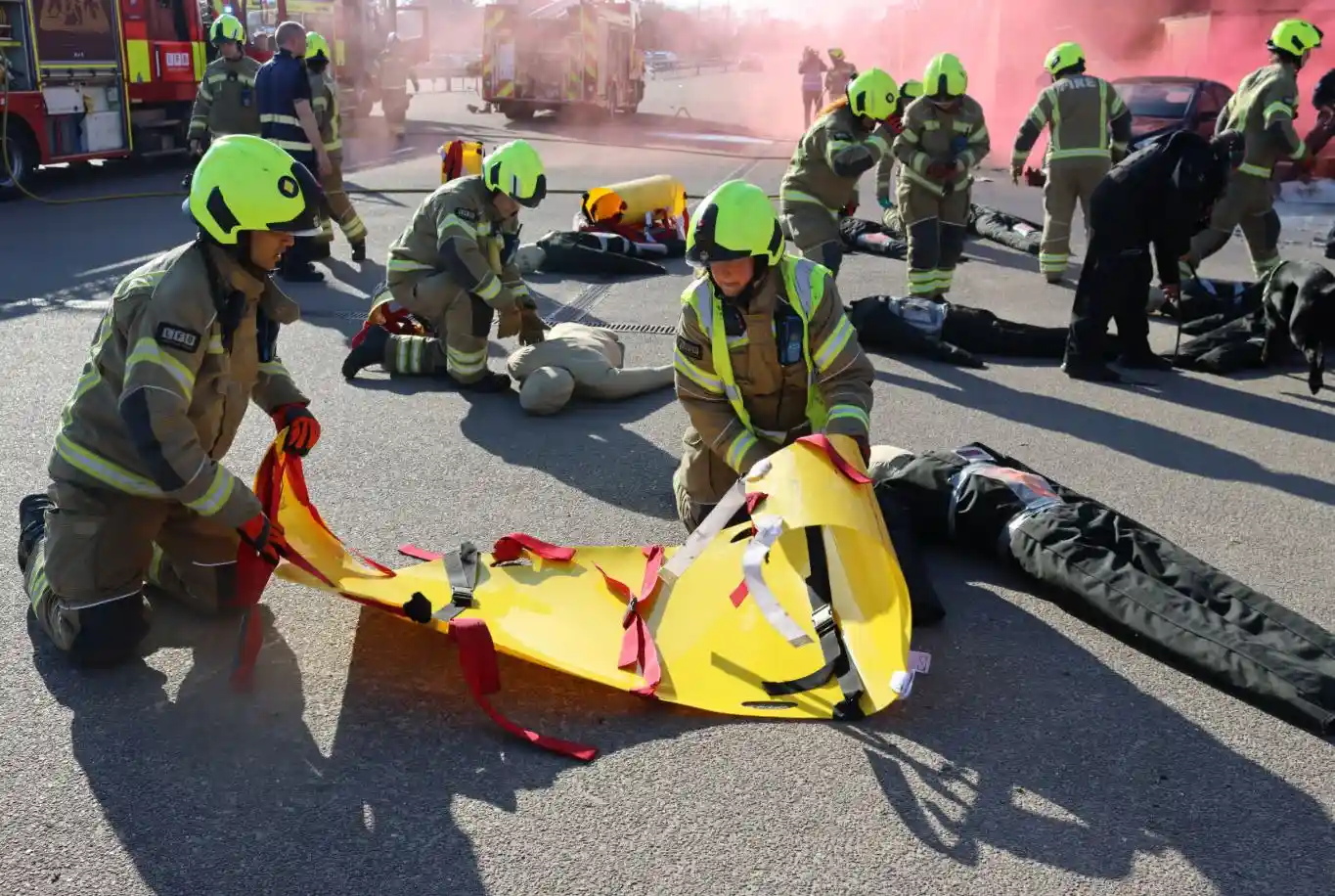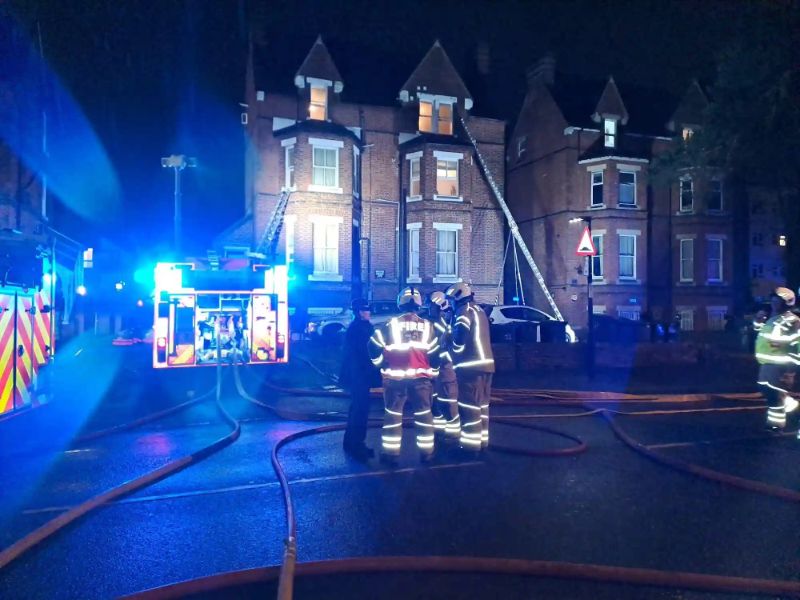New data from London Fire Brigade has revealed that firefighters rescued 3,627 people since January 2024 – an average of more than six people a day.
Firefighters rescued 318 people from fires over the past 18 months – an average of four people a week. The fire with the most rescues occurred in Upper Norwood, where crews rescued 10 people from a flat fire.
However, firefighters are skilled and trained to respond to a variety of incidents, and since 2024 they have carried out rescues from 43 different types of emergencies across London.
Firefighters rescued 1,754 people who had collapsed behind a locked door, 463 people from lifts, 389 people from special service incidents, 229 people who were locked in, 73 people from road traffic collisions, 68 people from water and mud incidents, 58 people from chemical incidents, and 275 people from other incident categories.
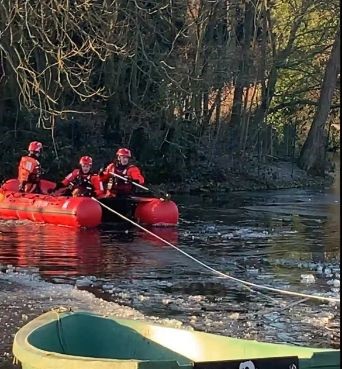
Group Commander Shaun Coltress said: “When people think about rescues, they often imagine a firefighter carrying someone out of a burning building. But, as London’s rescue service, we are trained to carry out rescues in a variety of different ways.
“Our fire engines carry dozens of pieces of equipment, and firefighters are trained to adapt their skills to unique scenarios.”
The most common rescue was to someone collapsed behind a locked door, with three people a day, on average, needing help. Firefighters provide support to the London Ambulance Service (LAS) when someone is suspected to have collapsed behind a locked door and is need of medical attention. By using specialist techniques and equipment, the Brigade can help LAS crews gain entry to the property, enable them to treat the patient quickly, and with minimal damage to the property.
In addition, around five people are rescued every week by firefighters from other special service incidents, where no fire is involved and firefighters deploy the Brigade’s specialist equipment as part of their response. People frequently find themselves in tricky situations and need a helping hand. For example, in 2024 firefighters attended a person trapped in a cat flap, window cleaners trapped in their cradle at height, and a child with their head stuck in playground equipment. Additionally, in April 2024 firefighters rescued a man rescued a man trapped in a trench at a construction site in Charlton.
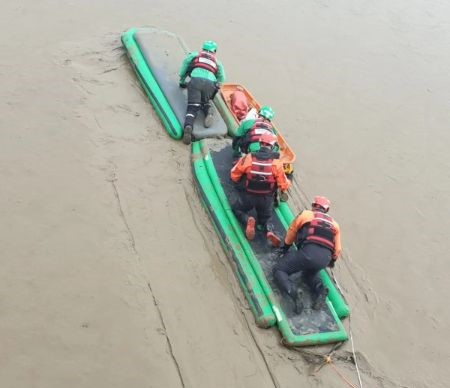
Firefighters also rescue almost one person or animal every week from a water related incident. Working with the Brigade’s specialist fireboat and Fire Rescue Unit crews, firefighters have carried out rescues when a vessel is in trouble or a swimmer is in danger. Notably, in March 2024 firefighters rescued two children from the River Colne in West Drayton.
Every other week, firefighters rescue someone from a chemical incident, where firefighters work alongside specialist hazardous material (HAZMAT) teams to respond to incidents like gas leaks and the unsafe mixing of common cleaning products. For example, in August 2024 firefighters carried out rescues at a swimming pool in Wembley following a chlorine leak.
Due to the high number of unique rescues attended by firefighters, the Brigade is urging the public to call 999 and not to be embarrassed in an emergency – the firefighters will almost certainly have attended a similar situation before.
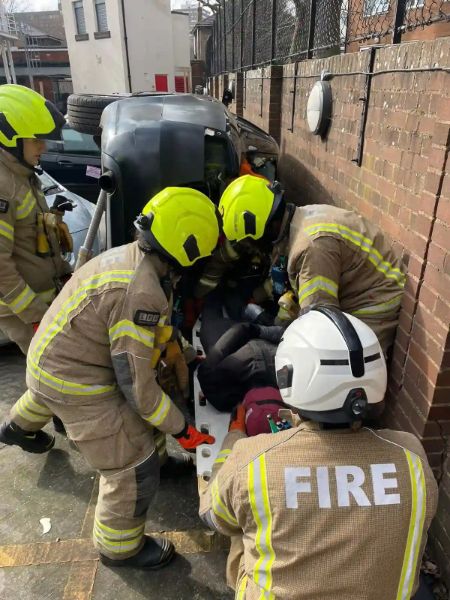
Group Commander Coltress continued: “Sadly, our Control Officers sometimes receive calls where someone has been too embarrassed to call us and their situation has deteriorated for hours, or even days, before they have sought help.
“Whatever the emergency, we will provide advice and assistance without judgment. Most of our rescues are completed in less than an hour, so it’s much better to ask for help than to wait and risk further harm to yourself or others.”
Overall, the shortest rescues carried out by the Brigade take on average 20-30 minutes, such as non-emergency lift rescues and small animal rescues. The longest rescues take between two to three hours and include incidents like building collapses and flooding. The average duration of an incident involving a rescue is 43 minutes.
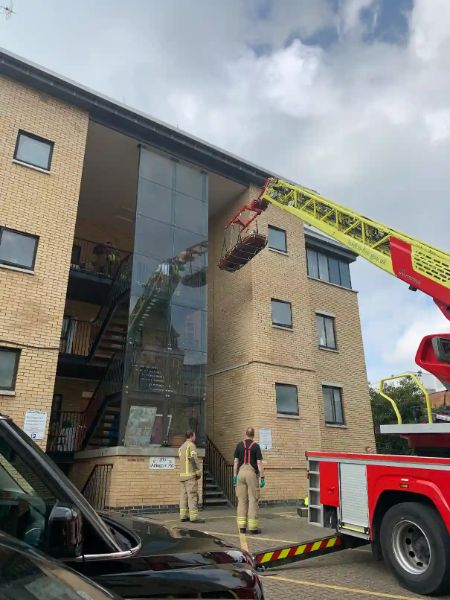
Firefighters using a turntable ladder to rescue someone trapped at height.
- Statistics are inclusive of the period 01/01/2024 to 30/06/2025.
- The statistics include incidents where someone has sadly passed away before, during or after the Brigade’s arrival and involvement.
- Further statistics regarding collapsed behind locked doors incidents:
- On average firefighters spend 24 minutes at collapsed behind locked doors incidents.
- Attending collapsed behind locked doors incidents has resulted in less than a two second impact in every London Borough on the availability of firefighters for other incidents.
- Crews spend less than seven per cent of their time at collapsed behind locked doors incidents.
- From 29th October 2024 London Fire Brigade have stopped attending automatic fire alarms in most commercial buildings between 7am & 8:30pm. This includes office blocks or industrial estates, during daytime hours – unless we receive a call reporting a fire.
|
Frequency of rescues by incident type |
|||||
|
Category |
Frequency (546 days 01/01/24-30/06/25) |
2024 |
2025 |
Total |
|
|
Collapsed behind locked doors |
3.2 a day |
22.5 a week |
1248 |
506 |
1754 |
|
Lift |
0.9 a day |
5.9 a week |
298 |
165 |
463 |
|
Special service |
0.7 a day |
4.9 a week |
263 |
126 |
389 |
|
Fires |
0.6 a day |
4.0 a week |
206 |
112 |
318 |
|
Locked in |
0.4 a day |
2.9 a week |
150 |
79 |
229 |
|
Person threatening to jump or precarious position |
0.2 a day |
1.4 a week |
77 |
29 |
106 |
|
Vehicle |
0.1 a day |
0.9 a week |
48 |
25 |
73 |
|
Water |
0.1 a day |
0.8 a week |
46 |
22 |
68 |
|
Rescue from height or depth |
0.1 a day |
0.8 a week |
45 |
21 |
66 |
|
No attendance** or NULL* |
0.1 a day |
0.8 a week |
44 |
15 |
59 |
|
Chemical |
0.1 a day |
0.7 a week |
40 |
18 |
58 |
|
Bariatric |
0.05 a day |
0.3 a week |
17 |
10 |
27 |
|
Other: |
0.03 a day |
0.2 a week |
8 |
9 |
17 |
|
Person trapped excluding RTC (6), flooding (5), suspect explosive or incendiary device on or in a waterway other than Thames (5), collapse of structure persons not involved (1) |
|||||
|
Total |
2490 |
1137 |
3627 |
||
|
|
/ 366 days = 6.8 people a day |
/ 180 days = 6.3 people a day |
/546 days = 6.6 people a day |
||
Source: London Fire Brigade
|
Number of rescues by incident type and category |
||||||
|
Incident type |
2024 |
2025 |
TOTAL |
2024 CAT TOTAL |
2025 CAT TOTAL |
CAT TOTAL |
|
Person locked out / in/collapsed behind locked door (call not from ambulance) |
937 |
398 |
1335 |
1248 |
506 |
1754 |
|
Person collapsed / injured behind door - requested by ambulance service |
311 |
108 |
419 |
|||
|
Special service reduced attendance |
263 |
126 |
389 |
263 |
126 |
389 |
|
Person shut in lift - Emergency |
206 |
129 |
335 |
298 |
165 |
463 |
|
Shut in lift - Non emergency |
92 |
36 |
128 |
|||
|
Person Locked In |
150 |
79 |
229 |
150 |
79 |
229 |
|
Fire |
89 |
52 |
141 |
206 |
112 |
318 |
|
Person Trapped |
66 |
37 |
103 |
|||
|
Fire or Smoke alarm in residential premises |
17 |
8 |
25 |
|||
|
Automatic fire alarm |
20 |
8 |
28 |
|||
|
Person threatening to set fire to themselves or Siege situation |
4 |
1 |
5 |
|||
|
Persons Reported |
3 |
2 |
5 |
|||
|
Reduced Fire attendance including electrical junction box in street, vehicle, skip, grass |
2 |
2 |
4 |
|||
|
Fire High Rise Buildings (6 floors +), including AFA and Smoke Alarm |
1 |
2 |
3 |
|||
|
FSG Persons Reported |
3 |
0 |
3 |
|||
|
Reduced Fire attendance involving Railway/ Tramlink property |
1 |
0 |
1 |
|||
|
Assist LAS with bariatric patient |
17 |
10 |
27 |
17 |
10 |
27 |
|
Rescue from height/depth |
45 |
21 |
66 |
45 |
21 |
66 |
|
Person threatening to jump |
38 |
22 |
60 |
77 |
29 |
106 |
|
Person threatening to jump - Thames |
1 |
4 |
5 |
|||
|
Person at Precarious Position |
38 |
3 |
41 |
|||
|
Water Rescue |
20 |
10 |
30 |
46 |
22 |
68 |
|
Person or animal in waterway / on foreshore accessible from land |
9 |
3 |
12 |
|||
|
Person Stuck in Mud |
2 |
0 |
2 |
|||
|
Midstream incident on Thames (vessels in collision, sinking, overturned, person(s) in water etc.) |
8 |
4 |
12 |
|||
|
Running call attendance on River Thames at request of Coastguard |
7 |
5 |
12 |
|||
|
NULL** |
40 |
14 |
54 |
44 |
15 |
59 |
|
No attendance recommended refer to Supervisor* |
0 |
1 |
1 |
|||
|
No Attendance* |
4 |
0 |
4 |
|||
|
Carbon Monoxide |
19 |
5 |
24 |
40 |
18 |
58 |
|
Gas Leak |
8 |
6 |
14 |
|||
|
HAZMAT |
9 |
3 |
12 |
|||
|
Hazardous substance incident including gas leak industrial premises. |
4 |
4 |
8 |
|||
|
Suspect explosive / incendiary device on / in waterway other than Thames |
1 |
4 |
5 |
8 |
9 |
17 |
|
Person trapped excluding RTC |
2 |
4 |
6 |
|||
|
Flooding (not commercial premises) |
4 |
1 |
5 |
|||
|
Collapse of structure persons not involved |
1 |
0 |
1 |
|||
|
Road traffic collision (RTC) |
39 |
22 |
61 |
48 |
25 |
73 |
|
RTC Persons trapped |
1 |
0 |
1 |
|||
|
Vehicle crashed into waterway accessible from land |
1 |
0 |
1 |
|||
|
Train or Tram incident involving trapped person |
3 |
1 |
4 |
|||
|
RTC - Persons trapped |
3 |
0 |
3 |
|||
|
Vehicle into building - RTC |
1 |
2 |
3 |
|||
|
Grand Total |
2490 |
1137 |
3627 |
2490 |
1137 |
3627 |
Source: London Fire Brigade
|
Average duration of incidents involving rescues by type |
|
|
Incident type |
Duration - 2024 |
|
Automatic fire alarm (AFA) |
01:10:01 |
|
Assist London Ambulance Service with bariatric patient |
01:06:22 |
|
Carbon Monoxide |
01:13:09 |
|
Collapse of structure persons not involved |
02:00:24 |
|
Fire |
03:35:10 |
|
Fire High Rise Buildings (6 floors +), including AFA and Smoke Alarm |
00:39:34 |
|
Fire or Smoke alarm in residential premises |
00:53:33 |
|
Flooding (not commercial premises) |
00:32:57 |
|
Fire Survival Guidance Persons Reported |
00:34:18 |
|
Gas Leak |
01:07:06 |
|
Hazardous substance incident including gas leak industrial premises. |
01:08:17 |
|
HAZMAT |
02:33:27 |
|
Midstream incident on Thames (vessels in collision, sinking, overturned, person(s) in water etc.) |
00:37:13 |
|
No Attendance* |
01:07:04 |
|
NULL** |
02:12:42 |
|
Person at Precarious Position |
00:45:16 |
|
Person collapsed / injured behind door - requested by ambulance service |
00:38:22 |
|
Person Locked In |
00:30:26 |
|
Person locked out / in/collapsed behind locked door (call not from ambulance) |
00:28:27 |
|
Person or animal in waterway / on foreshore accessible from land |
00:31:14 |
|
Person shut in lift - Emergency |
00:30:29 |
|
Person Stuck in Mud |
00:32:05 |
|
Person threatening to jump |
00:55:20 |
|
Person threatening to jump - Thames |
00:42:09 |
|
Person threatening to set fire to themselves or Siege situation |
00:51:31 |
|
Person Trapped |
00:40:19 |
|
Person trapped excluding RTC |
00:29:23 |
|
Persons Reported |
01:51:41 |
|
Reduced Fire attendance including electrical junction box in street, vehicle, skip, grass |
00:41:24 |
|
Reduced Fire attendance involving Railway/ Tramlink property |
00:19:43 |
|
Rescue from height/depth |
00:37:21 |
|
Road traffic collision (RTC) |
00:55:45 |
|
RTC - Persons trapped |
00:34:18 |
|
RTC Persons trapped |
00:27:28 |
|
Running call attendance on River Thames at request of Coastguard |
00:21:49 |
|
Shut in lift - Non emergency |
00:34:50 |
|
Special service reduced attendance |
00:29:10 |
|
Suspect explosive / incendiary device on / in waterway other than Thames |
00:42:09 |
|
Train or Tram incident involving trapped person |
00:40:22 |
|
Vehicle crashed into waterway accessible from land |
00:25:27 |
|
Vehicle into building - RTC |
03:34:35 |
|
Water Rescue |
00:58:53 |
|
Grand Total |
00:42:55 |
Source: London Fire Brigade
*No attendance: This category type means that the incident was resolved by another partner. The Brigade may still have attended, for example through a running call which means the incident did not originate from 999. For example, firefighters from a local station may be approached to help someone having a medical episode nearby and carry out a rescue before the arrival of London Ambulance Service.
**NULL: This category type is used when the type of incident is not categorised.

